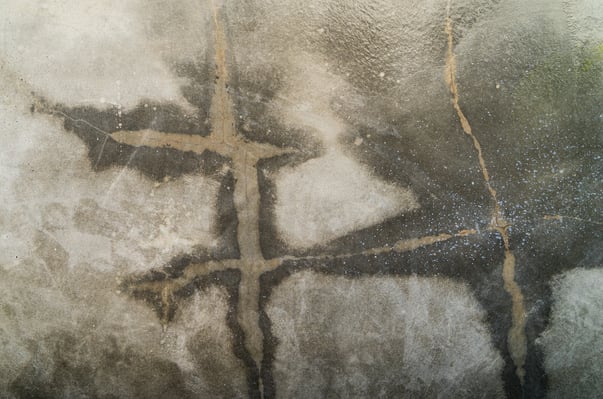Design Requirements for Floor Slabs in Buildings

The base floor in many buildings is simply a cast-in-place concrete slab, with limited design considerations for structural support or environmental control. However, the base floor can be a more complex system, composed of a structural foundation slab, layered with waterproofing and wearing slabs. This system is designed to withstand hydrostatic pressure and maintain a controlled environment.
The main issue with slabs is leakage, since concrete is the most common material, and cracks are a common issue in concrete elements. Another concern when designing floor slabs is controlling soil gas emissions such as radon. The design and construction of floor slabs are key to achieving the expected performance, durability, and a long life span. Also, repairing a foundation slab can be highly expensive or practically impossible after completion.
When designing floor slabs the best approach is being very conservative, especially in areas that will be buried. Incorporating high-quality materials with additional reinforcements is recommended to reduce failure risks.
Does your building envelope provide effective insulation and weatherproofing?
Structural Support
The floor slabs of a below-grade building enclosure must resist vertical gravity loads and upward soil or hydrostatic pressure loads. Downward loads come from the dead weight of the floor slab and any occupancy live loads such as foot traffic. In some structures, the floor slab can also serve as a mat foundation slab, resisting significant loads from columns and walls.
Floor slabs may also be exposed to upward soil and hydrostatic pressure loads, depending on their location and the water table of the area. Upward soil pressures may be applied to the floor slab when it is designed as a mat foundation, while the building point loads are downward forces.
Environmental Control
The exterior environment exposes foundations to thermal effects, moisture, insects, and soil gas. In particular, thermal effects and air humidity can also come from indoor sources. As with other below-grade elements, the performance of a floor slab will depend significantly on its ability to withstand and regulate these environmental effects. Preventing cracks is very important, both for structural performance and leakage prevention.

Moisture control measures often include a drainage and barrier-type system. In cases with hydrostatic pressure from groundwater, the first moisture control component is a pumping and dewatering system to mechanically drive down the water table. The second component of the moisture control system includes a granular aggregate layer below the floor slab, which provides an area for moisture to accumulate and dissipate. Moisture can also be pumped out or drained into a sump system or exit drain. In areas with a low water table or dry conditions, the granular aggregate layer and exit drain are normally enough for moisture control.
Once the moisture control system is defined, the next step is whether to include a waterproof membrane or vapor retarder below the floor slab.
- A vapor retarder serves as a barrier against vapor migration in the absence of hydrostatic pressure
- The waterproofing membranes will provide resistance to both vapor migration and hydrostatic pressure.
Most building codes demand a vapor retarder as minimum protection against moisture, even in areas with low water tables. Vapor retarders also minimize shrinkage stresses and cracking in the floor slab. Waterproofing membranes are required in situations with hydrostatic pressure and moisture-sensitive interiors. These membranes are commonly applied to a mud slab, cast on a granular aggregate or compacted earth layer.
Soil gas is another environmental condition. The migration of soil gases such as radon can be controlled with a polyethylene type of vapor retarder or waterproofing membrane. Protection of the membrane during construction is critical, along with attention to detail at all terminations, edges, and penetrations. This ensures proper control over moisture or soil gases.
Floor Slab Finish and MEP Distribution Systems

When dealing with floor systems, only the interior finish is of concern. The requirements for this finish depend on the use of the interior space, and some common finishes are carpet, tile, and adhered flooring. When using tiles or any type of adhered flooring, vapor control is crucial to ensure proper adhesion. In parking areas or storage spaces, the interior finish can be simply the exposed surface of the concrete slab.
The floor slab may contain components of MEP installations, such as mechanical piping, plumbing lines, and electrical feeders. When these elements are present, they must be designed to withstand the expected loads acting on the floor slab. MEP distribution systems should also be designed for ease of maintenance or modification.

Anuj Srivastava
Anuj Srivastava is a principal partner at NY Engineers. He is known for his MEP franchise market knowledge. Anuj is currently leading a team of 100+ MEP/FP engineers and has successfully led over 1500 franchise projects in the US.
Join 15,000+ Fellow Architects and Contractors
Get expert engineering tips straight to your inbox. Subscribe to the NY Engineers Blog below.

